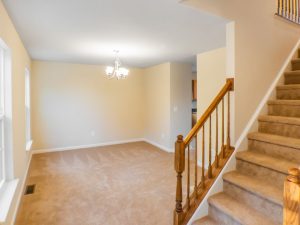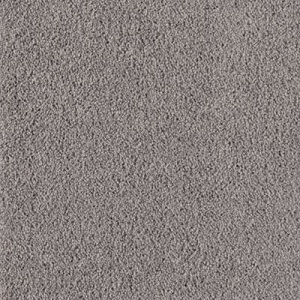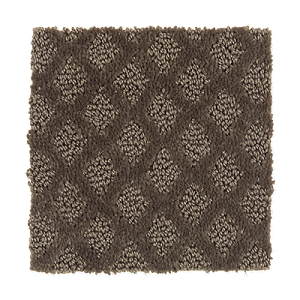Carpet

Few things contribute to the warmth and coziness of a home’s interior more than carpeting. There’s also nothing quite like the soft feel under your feet when you walk through a room.
Carpet Basics
Carpets are the most widely used floor covering in the country. They are beautiful, quickly installed, quiet, and warm under the feet. Carpets provide insulation and reduce noise transmission within the home and from another room below or above.
Carpets are made of both natural and synthetic materials. Natural fiber materials include wool and silk, with silk being used almost exclusively in fine rugs. Synthetic fibers are mostly nylon, polyester, polypropylene, and acrylic.
Carpets are constructed four different ways. It can be machine woven, which means the pile, or surface, yarn is woven at the same time as the backing yarn. If it’s tufted, this means a computer-controlled machine laces yarn in and out of a synthetic backing material and then chooses a cutting style. Carpet can also be bonded, which means short lengths of yarn are bonded in different manners to pre-woven backing. Then it can be hand-knotted, which is used in creating hand-woven rugs and carpets.
Common Textures
Carpet texture is influenced by three yarn factors during its construction: the cut, density, and twist tightness.
Two or more single ply yarns are commonly twisted together to make the carpet more durable: therefore, the tighter the twist, the stronger the pile. Looser twists may feel softer to the touch, but they will not last as long. Some twisted yarns are heat-set for even longer-lasting performance. The processes used in the carpet construction are listed on the label.
Carpet can be either cut or uncut depending on whether the yarn end loops are cut after being woven through the backing. The pile will be tighter and rougher to the touch if it’s cut because the end loops are missing, whereas uncut will be softer to the touch on the back because the loops remain.
Here are some common other carpet texture types to consider buying for the home:
- Frieze: a cut fiber using tightly twisted yarns
- Textured: a combination of twisted yarn crimped to form a desired pattern
- Cable: heavy and well-twisted yarn
- Berber cut pile: large yarn with a cut pile
- Berber loop pile: large, uncut yarn
- Shag: Casual long yarn in a long pile
Common Materials
Wool
Wool has been woven into carpets from time immemorial and is still considered the first choice for beauty and appeal. It wears well and with proper care will become more beautiful as it ages. Wool is naturally water repellent, which helps it wear better. It comes in several different shades, depending on the type of sheep’s wool selected, and can be readily dyed any color.
Nylon
In 1938, nylon became the first synthetic fiber to be used for carpeting, and even today it remains the most widely used carpeting material. The quality of nylon has improved greatly over the years, to the point that today some products feel nearly as soft as wool. Nylon is also a welcome substitute for people who are allergic to wool. It is stain resistant, wears exceptionally well, and cleans easily.
Polypropylene
This is another synthetic fiber that wears exceptionally well in both residential and commercial buildings. This material became a standard with many carpet manufacturers after 1950. The carpets usually are manufactured with either loop pile or Berber loops.
Polyester
Polyester is everywhere, including carpets. It does not wear quite as well as nylon, but feels better to the touch
or under bare feet. It is commonly manufactured with a cut pile and textured finish.
How to Judge Carpet Quality
The standard rule in the carpet industry is, “The deeper and denser the pile, the better the carpet.” Denseness is judged by how close the yarn strands are to each other. Deepness is found by measuring the height of the pile from the backing. Heavier and denser piles will last longer than light and loose piles.
One way to look at carpet quality is to fold back a portion of the carpet, causing the pile to fan open. This gives you a more accurate view of how dense the material is or how high the pile is than by just running your hand over the surface. By looking at several different carpets in this manner, you will soon get a feel for judging carpet quality.
Other factors to consider when buying carpet are stain- and wear-resistant qualities, along with fade resistance. Carpets may also contain antistatic controls. Most carpet materials should be selected with the end use in mind, i.e., will it be used in areas of light wear, as in bedrooms, or heavy wear, as in hallways, entryways, and living rooms.
Carpet Selections:
| Standard Carpet | Carpet Upgrade #1
|
| Carpet Upgrade #2 | Pad Upgrade #1 |
| Pad Upgrade #2 | Pad Upgrade #3 |












